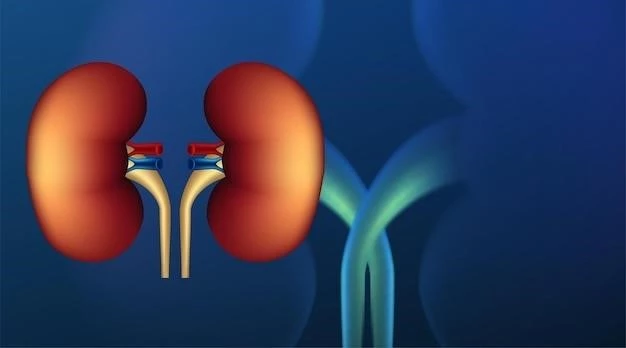Overview of Multinodular Goiter Cystic Kidney Polydactyly
A multinodular goiter is characterized by an enlarged thyroid gland with multiple nodules. Rarely, it is associated with cystic kidney disease and digital anomalies.
Definition of Multinodular Goiter
A multinodular goiter refers to an enlarged thyroid gland characterized by the presence of multiple nodules. These nodules can lead to various complications and may be associated with other medical conditions.
Understanding Cystic Kidney Disease
Cystic kidney disease refers to a heterogeneous group of conditions where fluid-filled sacs, known as cysts, develop in or around the kidneys. These cysts can be caused by genetic mutations or acquired later in life, impacting kidney function. Some forms of cystic kidney disease are hereditary, while others may arise sporadically. Diagnosis often involves imaging tests like ultrasound to visualize the cysts and determine the appropriate management approach.
Syndrome Description
A multinodular goiter, cystic kidney, and polydactyly syndrome is a rare genetic disorder characterized by the association of an enlarged thyroid gland with multiple nodules, kidney cysts, and digital anomalies.
Rare Genetic Syndrome
The rare genetic syndrome associated with multinodular goiter, cystic kidney disease, and polydactyly is characterized by a unique combination of symptoms involving the thyroid, kidneys, and digital anomalies. Cases reported in literature highlight the complexity and rarity of this genetic syndrome.
Association of Multinodular Goiter, Cystic Kidney, and Polydactyly
The association of multinodular goiter, cystic kidney disease, and polydactyly is a rare genetic syndrome characterized by an enlarged thyroid with multiple nodules, kidney cysts, and digital anomalies. Reported cases highlight the complexity of this syndrome involving thyroid, renal, and skeletal abnormalities.

Clinical Cases and Reports
Cases reported by Daneman et al. in 1985 described children with multinodular goiter, cystic kidney disease, and digital anomalies such as polydactyly, highlighting the complex nature of this syndrome.
Reported Cases by Daneman et al. (1985)
Case studies by Daneman et al. in 1985 highlighted children with multinodular goiter, cystic kidney disease, and digital anomalies such as polydactyly, providing valuable insights into this rare genetic syndrome.
Description of Digital Anomalies
In individuals with multinodular goiter-cystic kidney-polydactyly syndrome, digital anomalies such as digitalized thumbs, preaxial polydactyly, postaxial polydactyly, and other variations in finger and toe structure have been observed. These anomalies play a crucial role in the clinical manifestation and diagnosis of this rare genetic syndrome.
Multinodular Goiter-Cystic Kidney-Polydactyly syndrome involves genetic heterogeneity in follicular cells leading to the enlarged thyroid gland, renal cysts, and digital anomalies. Inheritance patterns and molecular mechanisms are critical for understanding this rare syndrome.
Genetics and Inheritance
Autosomal Dominant Polycystic Kidney Disease (ADPKD) is a hereditary cystic kidney condition predominantly caused by mutations in the PKD1 and PKD2 genes; Understanding the genetic basis of ADPKD is crucial for diagnosing and managing patients with this inherited disorder.
Genetic Heterogeneity in Multinodular Goiter
Genetic heterogeneity in multinodular goiter involves variability in follicular cell genes leading to an enlarged thyroid gland. This heterogeneity plays a crucial role in the inheritance and manifestation of the syndrome, emphasizing the importance of genetic understanding for diagnosis and management.

Diagnosis and Symptoms
Diagnosis of Multinodular Goiter-Cystic Kidney-Polydactyly syndrome involves identifying an enlarged thyroid with nodules, cystic kidney disease, and digital anomalies like polydactyly. Symptoms vary and can include thyroid enlargement, kidney cysts, and abnormal digits.
Phenotypic Description of the Syndrome
The Multinodular Goiter-Cystic Kidney-Polydactyly syndrome manifests in individuals with various digit anomalies, such as digitalized thumbs, preaxial polydactyly, and other finger and toe irregularities; This unique phenotypic presentation aids in diagnosing and understanding this rare genetic condition.
Symptom Presentation and Frequency
The Multinodular Goiter-Cystic Kidney-Polydactyly syndrome presents with symptoms like an enlarged thyroid gland (goiter), kidney cysts, and digital anomalies such as polydactyly. The frequency of these symptoms varies among individuals, with some showing thyroid enlargement, renal cysts, and abnormal digits while others may have different combinations of these manifestations.
Treatment and Management
The management of Multinodular Goiter-Cystic Kidney-Polydactyly syndrome involves a multidisciplinary approach focusing on addressing thyroid enlargement, renal cysts, and digital anomalies. Treatment options may include medical interventions, surgical procedures, and supportive care tailored to individual patient needs.
Current Approaches to Managing the Syndrome
The current management strategies for Multinodular Goiter-Cystic Kidney-Polydactyly syndrome involve a comprehensive approach focusing on addressing the enlarged thyroid gland, renal cysts, and digital anomalies. Treatment plans may include a combination of medical interventions, surgical procedures, and supportive therapies tailored to individual patient needs and symptoms.
Research on Therapeutic Interventions
Research on therapeutic interventions for Multinodular Goiter-Cystic Kidney-Polydactyly syndrome aims to explore effective treatment modalities, potential genetic targets, and holistic management strategies. Studies focus on personalized approaches to address the enlarged thyroid gland, renal cysts, and digital anomalies associated with this rare genetic disorder, with the goal of improving patient outcomes and quality of life.
Specialists and Healthcare Providers
Experts in Multinodular Goiter-Cystic Kidney-Polydactyly Syndrome are highly knowledgeable and conduct research, clinical trials, and provide specialized care for individuals with this rare condition. Clinical healthcare providers interested in this syndrome may offer targeted treatments and management strategies to improve patient outcomes.
Experts in Multinodular Goiter-Cystic Kidney-Polydactyly Syndrome
Experts in Multinodular Goiter-Cystic Kidney-Polydactyly Syndrome are individuals well-versed in the genetic disorder, conducting research, clinical trials, and offering specialized care to patients affected by this rare condition. These experts play a crucial role in advancing the understanding and management of the syndrome.
Clinical Healthcare Providers Interested in the Syndrome
Clinical healthcare providers interested in Multinodular Goiter-Cystic Kidney-Polydactyly syndrome offer specialized care and treatment options tailored to address the unique challenges associated with this rare genetic condition. These providers demonstrate a commitment to understanding and managing the complexities of the syndrome to improve patient outcomes.
Resources and Support Groups
Support Groups for individuals with Multinodular Goiter-Cystic Kidney-Polydactyly Syndrome provide valuable assistance and information. Healthcare providers and specialists offer targeted care, ensuring comprehensive management of this rare condition.
Support Groups for Individuals with the Syndrome
Support groups for Multinodular Goiter-Cystic Kidney-Polydactyly Syndrome provide a supportive environment, valuable resources, and information for individuals and families affected by this rare condition. These groups facilitate connection, education, and emotional support, enhancing the overall well-being and understanding of the syndrome.
Financial Resources and Disability Benefits Information
Financial resources and disability benefits information can provide support to individuals with Multinodular Goiter-Cystic Kidney-Polydactyly Syndrome. Understanding available financial assistance and disability benefits can aid in managing medical expenses and accessing necessary support services for individuals affected by this rare condition.
Ontology and Medical Coding
Understanding the medical coding for the Multinodular Goiter-Cystic Kidney-Polydactyly syndrome is crucial for accurate diagnosis and treatment. Integration of the syndrome into biomedical ontologies ensures proper classification and recognition in medical databases.
Understanding the Medical Coding for the Syndrome
The medical coding for the Multinodular Goiter-Cystic Kidney-Polydactyly syndrome involves the selection of specific codes such as E04.2 for accurate diagnosis and classification. Proper coding ensures effective communication and standardized documentation within the healthcare system.
Integration of Syndrome in Biomedical Ontologies
The Multinodular Goiter-Cystic Kidney-Polydactyly syndrome is integrated into biomedical ontologies to ensure accurate classification, recognition, and standardized documentation within medical databases. This integration aids in enhancing the understanding and management of this rare genetic condition.
